INNER WORLDS Conscious | Unconscious
Curator: Patricia Watts
https://issuu.com/wattsartpublications/docs/innerworld_book_small_fullbook_with
Marin Community Foundation
Novato, CA
Contact: Vikki Garrod415.464.2527
vgarrod@marincf.org
Marin Community Foundation exhibition:
Inner Worlds: Conscious Unconscious
September
23, 2014 to January 9,2015
featuring a survey of sixty years of work by five pioneering North Bay artists.
The exhibition
was held at the Foundation's offices at 5 Hamilton Landing, Suite 200,Novato, CA.
A public reception
was held Wednesday, October 8th from 4:30 - 6:30 pm.
In the 1960s, the North Bay of the San Francisco Bay Area was a refuge for post-war artists, many of whom wanted to unplug from the gallery scene and simply focus on their work.
Inner Worlds presents five of these rugged individualists who were intellectuals educated in art, as well as design, psychology, mathematics, dance, calligraphy, Kabbalah, Zen and astronomy. As such, they consciously sought to create their work while tapping into the unconscious. Building on a foundation of post-surrealism, Beat culture, and abstract expressionism, Jesse Reichek (1916-2005), Paul Beattie (1924-1988), Jenny Hunter Groat (1929-2013), John Anderson (1932-2011), and Adam Worden (1936-1999), have each left behind significant oeuvre's in drawing, painting, collage, assemblage, artist's books, and ephemera.
This legacy exhibition seeks to highlight and acknowledge their contributions to Bay Area art, all while having remained relatively unknown or under the radar, nationally and even regionally, for most of their lives.
About the Artists:
Jesse Reichek (1916-2005) was born in Brooklyn, New York. He was educated at the Institute of Design in Chicago and the Academy Julien in Paris and taught at the University of Michigan, the Institute of Design, and Illinois Institute of Technology. From 1953 to1986, he was Professor of Design and City & Regional Planning at the University of California-Berkeley. Reichek was represented by Betty Parsons Gallery in New York City from 1958-1968. After participating in the Art & Technology exhibition at LACMA in Los Angeles in 1971, Reichek moved to Petaluma where he painted in seclusion for over 30 years. His paintings express
"the structure of process, the process of creation, and the creation of relationship." His catalogue raisonne includes nearly 3,000 works, including painting and sculpture.
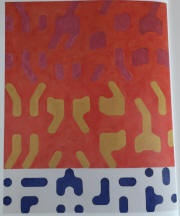 |
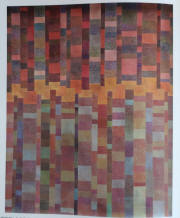 |
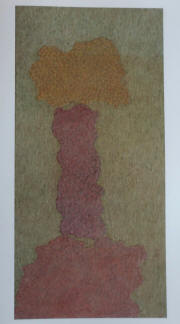 |
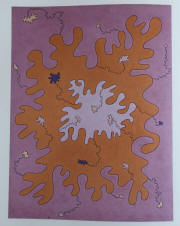 |
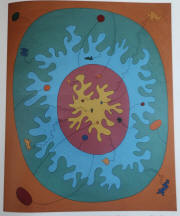 |
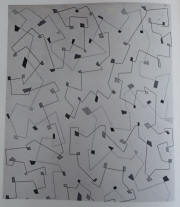 |
Exegesis 17, 1983
acrylic
on canvas 25 x 20.5 in. |
8 August, 1956
oil on
canvas 31 x 25 in. |
Untitled, 1958
oil on
masonite 48 x 23.5 in. |
29 August, 1949
oil on
canvas 25.5 x 20 in. |
25 October, 1950
oil on
canvas 64 x 52 in. |
3 May, 1950
oil on
canvas 31.5 x 25.5 inc. |
| |
|
|
|
|
|
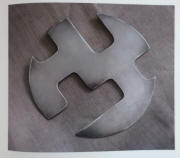 |
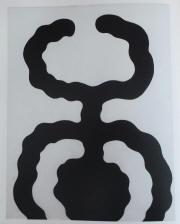 |
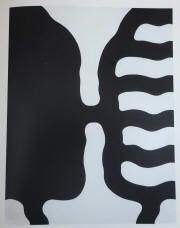 |
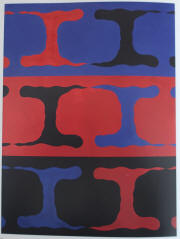 |
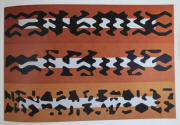 |
silver metal disc, 1980
4 x 4 in. |
One etc., 1964
oil on
canvas 40 x 31 in. |
Nineteen etc., 1964
oil
on canvas 40 x 31 in. |
e.g. 109, 1967
acrylic
on canvas 82 x 62 in. |
exegesis 38, 1967
acrylic on canvas 48x 72 in |
Paul Beattie (1924-1988) was born in Bay City, Michigan. He was educated at The Society of Arts and Crafts in Detroit, Sonoma State University, and UC Berkeley. He taught at Santa Rosa Junior College from 1974-1980. Beattie arrived in San Francisco in 1954, where he fell in with the Beat Revolution, collaborating with artists such as Wallace Berman, George Herms, and Jay De Feo. In 1963 he moved to Sonoma County where he continued to make art till his passing. His catalogue raisonne includes approximately 4,000 drawings, collages, constructions, sculptures and paintings, as well as Beat-era poetry ephemera created on letter press. Beattie's interest in astronomy, physics, and deep space informed his art, which he described as abstract realism.
Jenny Hunter Groat (1929-2013) was born in Modesto, California. She came to San Francisco in 1951 to join the Anna Halprin-Welland Lathrop School and Dance Company. In the summer of 1956, Groat studied calligraphy at Reed College in Oregon, and in 1961, she started her own dance company,
Dance West. By 1968, she stopped dancing and took a 5-year hiatus to study Zen and participate in Jungian analysis. Groat moved to Mill Valley in 1972, where she developed her calligraphy practice and made artist book structures for almost 20 years. Throughout her career she gave several performances, did hundreds of calligraphy assignments and, in her last 20 years, she painted over 100 abstractions.
John Anderson (1932-2011) was born in Chicago. He studied painting at the University of Illinois and, after a short time in Mexico City, moved to the Bay Area in 1958 where he attended the California College of Arts and Crafts. Anderson was mentored by surrealist painter Gordon Onslow Ford, who invited him to live and work as an artist on his property in Inverness. There, for over five decades, he created more than 500 paintings and drawings, focused on natural wonder and cosmic order, or what he referred to as Deep Painting. After years of being relatively unknown, he was represented by Weinstein Gallery in San Francisco from 2008-2013, which resulted in the sale of over 100 paintings.
Adam Worden (1936-1999) was born in Montana and raised in Lewiston, Idaho. He received his bachelor's degree in mathematics from Whitman College in Washington State. Worden participated in the Beat Movement, doing experimental theater in New York City in the early 1960s, then moved to the Bay Area in 1964. In 1974 he moved to Sonoma County, where he made a majority of his collage works, including assemblage sculptures, from found materials. Worden created approximately 400 collages, unsigned and undated, from the late 1960s through the 1990s. He never had gallery representation or exhibited his work at museums or cultural institutions.
Inner Worlds includes painting, collage and ephemera by five deceased artists from the North Bay. Artists include: Jesse Reichek, Paul Beattie, Jenny Hunter Groat, John Anderson, and Adam Worden.
This exhibition was curated by Patricia Watts, consulting curator for the Marin Community Foundation, who had been conducting a field study of mature and deceased artists in the North Bay of the San Francisco Bay Area for almost a decade.
patricia@wattsartadvisory.com
About the Marin Community Foundation
The Marin Community Foundation is the primary center for philanthropy in Marin County, CA and is one of the largest community foundations in the U.S. It manages the assets of the Leonard and Beryl H. Buck Trust and over 450 funds established by individuals, families, and businesses. The Foundation makes significant improvements in communities around the world in two ways: by spearheading initiatives for long-term, sustainable change in Marin and by distributing grants from donor-advised funds locally, across the U.S., and around the world. Now in its 28th year, the Marin Community Foundation has assets of over $1.6 billion, with annual grant distributions of approximately $60 million.










